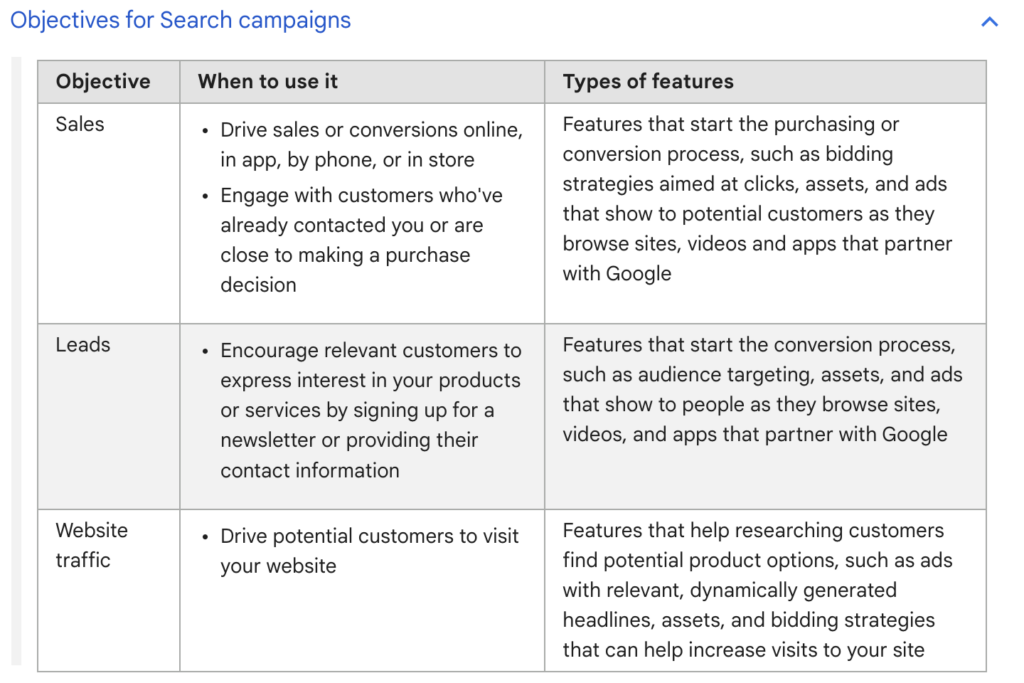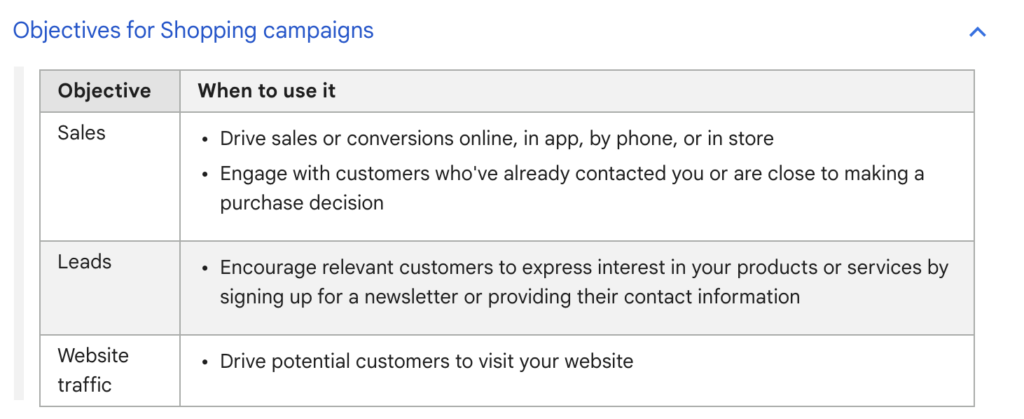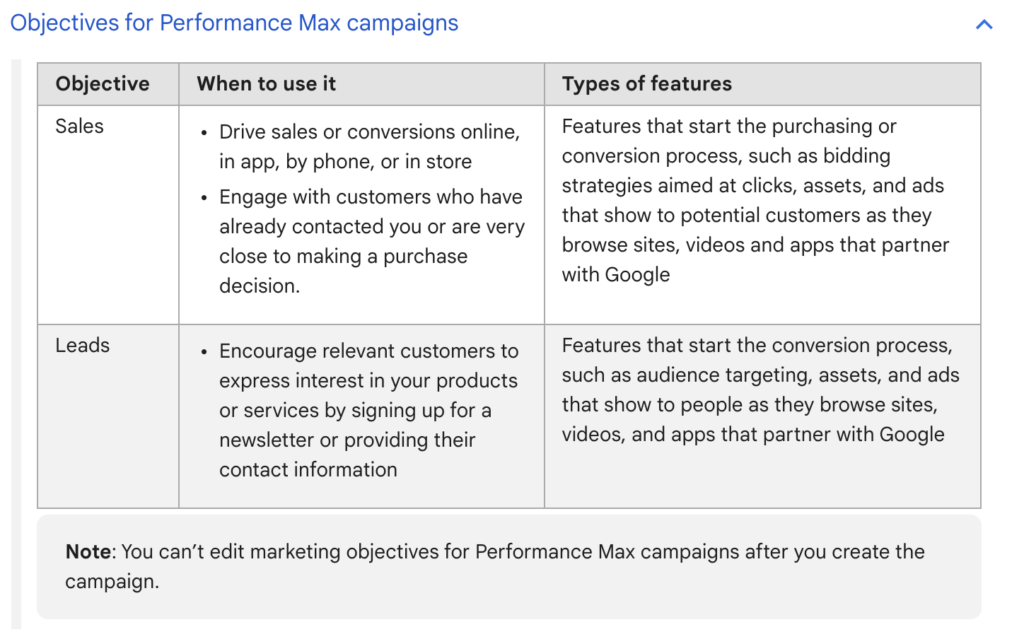When it comes to Google Ads Campaign objective you could choose seven different campaign goals. These objectives define what you want to achieve with your advertising efforts.
Now, if you’re running an e-commerce business, your main goal is to increase sales and ultimately grow your business. So, the question becomes: How can you use Google Ads to boost your sales effectively?
By selecting the right campaign objective that aligns with your goal of increasing sales, you can tailor your advertising strategy to drive more conversions and revenue for your e-commerce store.
Campaign Objectives in Google Ads
Google Ads offers several campaign objectives to help advertisers achieve their specific goals.
These campaign objectives help to tailor ad campaigns to meet specific business goals, whether it’s generating sales, increasing brand awareness, driving website traffic, or promoting app installations.
Choosing the right campaign objective is crucial for optimizing ad performance and achieving desired outcomes.
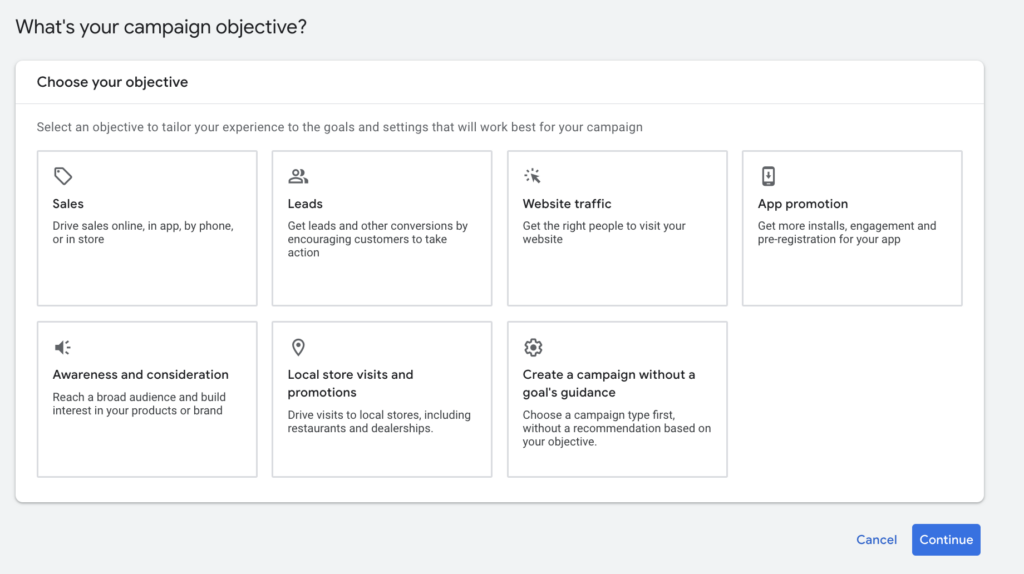
How Google Ads Objectives Works?
When you create a campaign in Google Ads, the first step is to select an objective that aligns with your main business goal.
For instance, if your aim is to drive sales through your ads, you’d select the “Sales” objective. This choice directs the campaign towards generating more sales as its main focus.
After selecting an objective, Google Ads provides recommended features and settings that are tailored to help achieve the chosen objective.
For example, if you select the “Sales” objective, you’ll be presented with options and settings that can help you achieve this goal effectively.
In some cases, you have the flexibility to add or remove an objective at any time during campaign setup. Additionally, you can choose not to use a specific objective and create a campaign without receiving recommendations related to that objective.
After selecting campaign objectives, you’ll proceed to choose the type of campaign you want to run. The campaign type determines where your ads will be displayed and the available settings and options for your campaign.
Once you’ve specified the campaign type, you’ll select the networks where you want your ads to appear. This includes options such as the Google Search Network, Display Network, YouTube, and more.
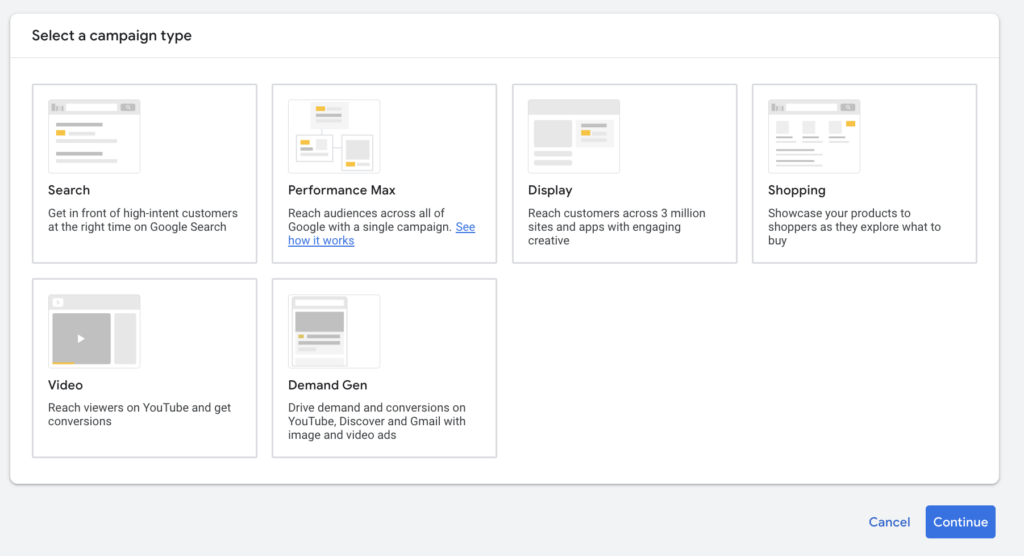
Create Campaign with an Objective
When creating Google Ads campaigns for e-commerce businesses, we recommend focusing on Performance Max, Search, or Shopping campaigns.
Search and Shopping campaigns offer objectives such as sales, leads, and website traffic, allowing you to tailor your advertising strategy to meet specific goals.
However, if you’re considering Performance Max campaigns, your options are limited to sales or leads optimization.
Performance Max campaigns are designed for automated optimization across various Google ad formats and placements, providing efficient performance tracking and management.
It’s important to note that once you’ve created a Performance Max campaign, you can’t edit the marketing objectives.
Therefore, it’s crucial to choose the most suitable objective based on your advertising priorities.
Sales or Website Traffic objectives?
If your goal is to drive more sales for your e-commerce business through Google Ads, it’s essential to optimize your campaigns for sales.
While selecting objectives like ‘Website Traffic’ may indeed generate a lot of visits to your website and potentially lower your CPC, remember that not all visitors are ready to purchase.
Choosing a ‘Sales’ or ‘Conversions’ objective targets people more likely to make a purchase.
This leads to better results because you’re reaching the right audience – those ready to purchase – instead of just driving any traffic to your site.
In a debate about whether to choose the “Sales” or “Website Traffic” objective in Google Ads, it’s essential to prioritize your ultimate goal of increasing sales for your e-commerce business.
Therefore, the argument would lean towards selecting the “Sales” objective.
Summing Up
To sum up, selecting the appropriate Google Ads Campaign Objective is crucial for achieving your business goals effectively.
By understanding the differences and implications of each objective, you can tailor your advertising strategy to drive the desired results and maximize your campaign’s performance and ROAS.

